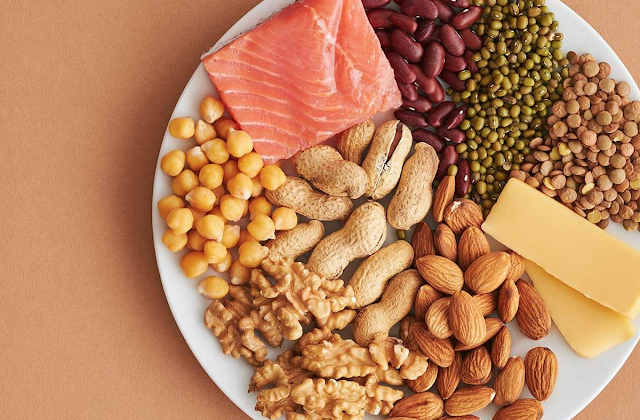Actinase Protein Complex Versatility
Actinase Protein Complex Versatility
Every commercially accessible food product's ingredients list, which may be located on the back or side panel, gives consumers a good idea of what they're getting into. It reveals the product's constituents, arranged according to their abundance. The amount of each component is omitted from the display. Because of this, more and more consumers are reading the Nutrition Facts panel on product labels to get a clearer picture of what they're eating.[i]
However, a new issue has sprung up in its place. Despite the fact that knowing how many minerals and vitamins a product contains might be helpful to consumers, there are differences within those aspects that aren't represented by a conventional food tag. When looking at protein, this becomes very evident.
Protein's central role in a healthy diet is well-known among most consumers. Diet and muscle maintenance both rely on protein, which is the life-sustaining building component. Due to variances in protein sources and quality, the RDA (Recommended Daily Intake) of 50 grams of protein may not provide the health benefits that it should.
The variety of proteins in goods is almost as broad as the variety of items themselves. Whey, soy, casein, and other kinds of protein may be used by manufacturers to add protein to their goods. Within each of these protein types, "protein grades" such as whey concentrate, whey isolate, and whey hydrolysate exist.An essential differential, even though it is not shown on the Nutrition Facts panel, is that of protein type and grade in a product.

The body's ability to digest and absorb protein is directly linked to the quality and kind of protein it consumes. Whey isolate, for example, is easily absorbed by the body after exercise. For long-term energy and anti-catabolism, other proteins like caseinates are best consumed when there will be a significant gap between meals (catabolism is the state in which the body breaks down muscle tissue for energy).
Because of the high cost of production, only a limited fraction of goods include hydrolyzed proteins. It is often used in newborn formulas since it is simple to digest and absorb, making it a popular ingredient. Many hydrolyzed proteins originate from larger proteins that have been broken up into smaller units called peptides through an enzyme process. Peptides are formed by slicing large protein molecules in half. The simpler it is to digest and absorb a protein, the smaller the peptide is (measured in Daltons).
Hydrolyzed proteins' appeal is also due to the fact that they are less prone to denaturation than regular proteins (a process by which the proteins are broken into structures that the body cannot easily digest).
Customers are likely to keep looking for items that include hydrolyzed protein since it is a fantastic, natural source of protein. But here is when things become tricky. Nutrition Facts labels do not show the quality or kind of protein utilized in a product's formulation. The buyer must return to the ingredient list in order to discover this information. Unlike the USDA, the FDA does not compel food manufacturers to declare the quality of the proteins they use (such as whey, soy, or egg) (e.g., concentrate, isolate, or hydrolysate).
Because no two proteins are exactly the same, different techniques are used by different companies to incorporate them into their products. For alkaline proteins like caseinate and soy, only "milky" tastes like chocolate and vanilla will do. The high viscosity of casienates and soy is still another disadvantage (thickness). When using casein or soy in a beverage, this restricts the quantity that may be utilized. Acid-based protein whey is less viscous than casein protein. Because it is compatible with acidulants like citric and malic acid, whey may be utilized in fruity tastes. When heated, all of these proteins denature. This is a problem for all of these proteins (they break apart). Proteins that have been denatured are more difficult to digest and used by the body. The vast majority of proteins on the market come into this group.
However, Actinase ®, a revolutionary hydrolyzed protein combination, might be altering this for the better. Actinase is very dense due to its molecular structure. Forty grams of actinase may be distributed in water that is no thicker than tomato juice, making it easy to administer. At this concentration, any other protein would be a soluble mass. That is to say, producers may use Actinase instead of protein fortification to increase protein content without increasing product thickness (or viscosity). Actinase is also heat-resistant, so it may be used in a variety of applications outside sports drinks.
Despite its heat-resistant and low viscosity properties, Actinase has a lot more to offer than that. Completely safe for both acid and alkaline environments, as well as hypoallergenic (i.e., Actinase contains all essential amino acids). Actinase also boosts the body's metabolism and calorie burn rate via thermogenesis, a natural physiological process. This is great news for those who are trying to lose or maintain their weight since it reduces the frequency and severity of insulin spikes that cause fat storage. Actinase's flavor and scent are unremarkable, which is great for those who wish to take a high-quality protein source but don't care about the taste.
Until recently, the only way to determine whether one was getting the recommended daily allowance of protein was to look at the nutrition label on the product they were eating. With regard to protein, though, things have become more complicated. Consumers increasingly realize that knowing how much protein is in their diet isn't enough. They should also be informed of the protein's origin and quality.
Post a Comment for "Actinase Protein Complex Versatility"